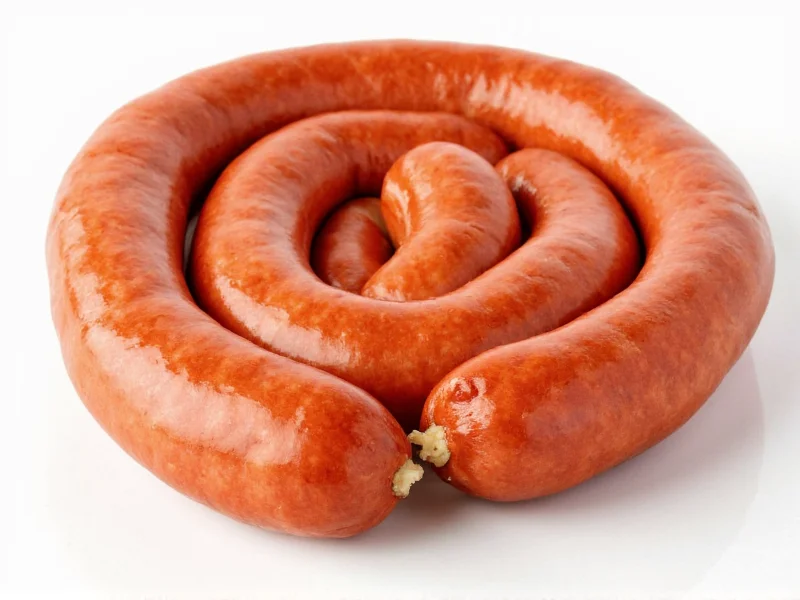When home cooks search for “butter sausage,” they’re usually seeking guidance on preparing sausages using butter rather than discovering a specialized product. This culinary confusion stems from similar-sounding terms and regional variations in cooking terminology. Understanding the distinction between cooking with butter versus sausages containing butter prevents recipe failures and clarifies grocery shopping expectations.
Why “Butter Sausage” Causes Confusion
The term creates understandable confusion because:
- Dairy restrictions: Most traditional sausages avoid dairy ingredients due to preservation requirements and religious dietary laws
- Similar terminology: “Butcher’s sausage” (referring to a specific cut or preparation) gets misheard as “butter sausage”
- Cooking method confusion: Many recipes instruct to “cook sausage in butter” which gets condensed to “butter sausage”
- Regional variations: Some Scandinavian and German preparations use butter in sausage accompaniments
| Term | Actual Meaning | Common Misunderstanding |
|---|---|---|
| Butter sausage | Not a standard culinary term | Belief it’s a specific sausage variety |
| Butcher’s sausage | Traditional preparation method | Misheard as “butter sausage” |
| Butterflied sausage | Sausage cut open flat for cooking | Confused with “butter” terminology |
| Sausage cooked in butter | Preparation technique | Shortened to “butter sausage” |
Properly Cooking Sausages with Butter
While authentic sausage recipes rarely contain butter, using butter during cooking creates exceptional results. This technique works particularly well with:
- Pork sausages (especially apple-flavored varieties)
- Chicken and turkey sausages
- Fresh bratwurst
- Italian sausages
Optimal Butter Cooking Method
Follow these steps for perfectly cooked sausages with butter:
- Use unsalted butter to control sodium levels
- Combine butter with high-smoke point oil (1:1 ratio) to prevent burning
- Cook over medium-low heat for 12-15 minutes, turning frequently
- Add aromatics like shallots or garlic during the last 5 minutes
- Finish with a splash of vinegar or wine to balance richness
This approach creates a rich fond in the pan ideal for quick sauces. The butter’s milk solids brown beautifully, creating complex flavors that oil alone cannot achieve. Many professional chefs use this “butter basting” technique for premium sausage preparations.
Regional Variations That Might Explain the Confusion
While no standardized “butter sausage” exists, these regional preparations might contribute to the terminology confusion:
- Scandinavian Smørrebrød preparations: Open-faced sandwiches featuring cold cuts with generous butter application
- German “Butterbrot” tradition: Buttered bread served alongside sausages
- Austrian “Butterkuchen”: Sweet cake sometimes served with savory sausage courses
- Midwestern “Butter Burger” influence: Regional preference for butter-enhanced meat dishes
When Butter Doesn’t Belong with Sausage
Certain sausage types and cooking methods work poorly with butter:
- Smoked sausages: Already contain sufficient fat; butter adds unnecessary richness
- Grilled sausages: Butter causes flare-ups and charring
- Deep-fried preparations: Butter’s low smoke point makes it unsuitable
- Halal or Kosher sausages: Dairy prohibition makes butter incompatible
For these applications, high-smoke point oils like avocado or grapeseed oil provide better results without compromising dietary requirements.
Creating Restaurant-Quality Sausage Dishes at Home
Transform basic sausages into gourmet meals using butter-enhanced techniques:
- Simple pan sauce: After cooking sausages, add shallots, deglaze with apple cider, then swirl in cold butter
- Butter-poached sausages: For delicate chicken sausages, gently cook in warm butter (160°F) for 10 minutes
- Compound butter topping: Mix softened butter with herbs and garlic, then melt over finished sausages
- Buttery breadcrumb coating: Combine melted butter with panko for oven-baked sausage preparations
These methods answer the practical need behind “butter sausage” searches without perpetuating culinary misinformation. Understanding the distinction between cooking with butter versus sausages containing butter prevents recipe failures and clarifies grocery shopping expectations.











 浙公网安备
33010002000092号
浙公网安备
33010002000092号 浙B2-20120091-4
浙B2-20120091-4